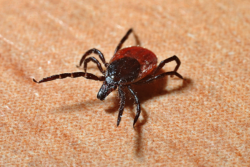If you have pets, you may have encountered fleas and ticks at some point. These are both blood-sucking parasites that can affect animals and humans. But do you know the difference between fleas and ticks? Let’s look at some of the main differences between these two pests and how to deal with them.
Fleas are insects with six legs and no wings. They are usually dark reddish-brown to black and measure about 1/8-inch long. They have flat bodies and needle-like mouthparts that they use to feed on their host. Fleas can jump up to six inches and usually stay on one host for their entire life cycle. These pests prefer to feed on animals, but they can bite humans if they can’t find a suitable host. They can potentially cause several problems for their host including irritation and disease.
Ticks are arachnids with eight legs and piercing mouthparts. They are teardrop-shaped and can range from 1/8-inch to 1/2-inch in size. They have flat bodies that can become rounder as they feed on their host. Ticks can’t jump or fly, but they wait for hosts to come near them using a method called “questing”. Ticks can feed on different hosts throughout their life cycle. Like fleas, ticks can cause several forms of irritation and diseases.
Fleas and ticks have different habitats and behaviors. Fleas like to live in shaded, grassy areas where they can find hosts easily. They tend to infest pets and homes, especially pet bedding, rugs, and furniture. Ticks prefer to live near their hosts’ nests or burrows, or in grassy and wooded areas where they can find hosts passing by. They tend to stay outside and attach to pets or humans who venture into their territory.
Here are some tips to prevent flea and tick infestations:
- Protect your pets with flea and tick-repelling products that are recommended by your veterinarian.
- Regularly wash your pet’s bedding, rugs, and any items that they frequently rest on.
- Vacuum your home daily to remove any fleas or eggs that may have fallen off your pet.
- Use a flea comb or wet your pet’s hair to make it easier to spot fleas or ticks.
- Remove any ticks from your pet or yourself as soon as possible using tweezers or a tick removal tool.
If an infestation gets out of hand, contact a pest professional to assist you in eliminating and preventing fleas and ticks around your yard. A pest professional can provide additional preventative information and create a personal plan for your home to rid of fleas and ticks.



